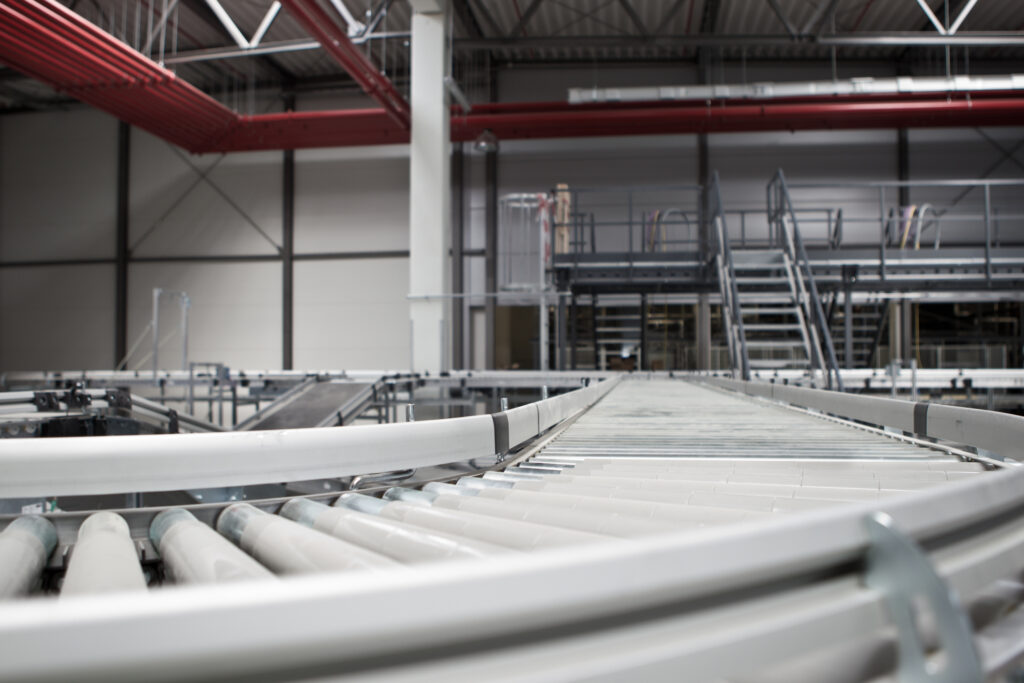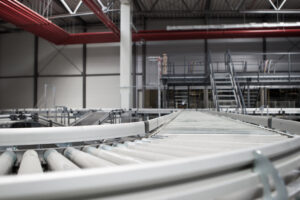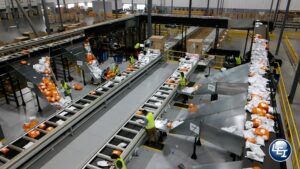Table of Contents
Efficient conveyors are the backbone of many production facilities. But when inefficiencies crop up, recognizing signs it’s time to upgrade your conveyor system becomes critical to prevent downtime, minimize costs, and improve safety. In this detailed guide, we’ll explore the major indicators that your conveyor needs a modernization overhaul and how Lafayette Engineering can help.

Common Servicescauses behind conveyor wear and tear
Conveyor systems endure constant mechanical stress—belt abrasion, roller friction, bearing failures, and component fatigue. Over time, these hide in plain sight:
- Worn belts showing fraying edges
- Misaligned rollers causing uneven movement
- Bearing breakdowns leading to excess heat and noise
These issues accumulate, eroding overall system integrity—often without industrial leaders realizing the true impact.
How conveyor downtime signals signs it’s time to upgrade your conveyor system
Unexpected stops are the most obvious sign. Every minute offline costs time and money:
- Broken down machines
- Delayed shipments leading to customer dissatisfaction
- Lost labor productivity and overtime costs
When unplanned maintenance becomes routine, it’s a red flag indicating a system past its prime.
Increased maintenance costs reveal it’s time to upgrade your conveyor system
Escalating costs in parts, labor, and unexpected repairs are rarely sustainable. When maintenance budgets explode and frequency spikes, your conveyor may be better off with a full upgrade than piecemeal fixes.
Safety incidents as warning signs it’s time to upgrade your conveyor system
Repetitive safety incidents—like jam-related finger injuries or tripping hazards—are unacceptable. Old systems lack modern guarding, emergency stops, and lockout/tagout controls. If frequent safety issues hit your logs, that’s a solid indicator it’s time to upgrade your conveyor system.
Outdated technology and automation needs
Industry 4.0 advancements like remote monitoring, smart sensors, and PLC integration are now expectations, not luxuries. Manual adjustment or analog monitoring shows you’re falling behind. Modernizing brings better throughput and data visibility.
Capacity constraints – signs it’s time to upgrade your conveyor system
When your current belt speed, volume, or configuration can’t keep pace with renewed demand, upgrade becomes necessary. Overloading causes wear and quality issues. If you’re already at capacity and growing, it’s almost certainly time.
Energy inefficiency as a sign it’s time to upgrade your conveyor system
Older motors, inefficient drives, and outdated pneumatics suck energy. Newer variable-frequency drives (VFDs), servo motors, and energy recovery can cut power costs by 20–40%. An expensive upgrade—but one that pays for itself.
Poor tracking and product damage issues
Skewing belts, frequent jams, misaligned modules—these are signs it’s time to upgrade your conveyor system, because product damage erodes margins and reputation.
Regulatory compliance and industry standard updates
Food, pharma, and automotive sectors have specific sanitation or traceability requirements. If your conveyor fails to meet new standards, continuing operations could trigger fines—or worse.
Return on investment calculations for upgrades
Upgrade decisions shouldn’t be gut—they should be math. Evaluate:
- Savings from reduced downtime
- Maintenance cost savings
- Labor efficiency
- Energy reduction
- Safety and compliance improvements
A well-planned conveyor upgrade can pay itself off within 1–3 years.
Steps to evaluate your current conveyor health
- Conduct a thorough inspection: belts, rollers, motors, controls
- Log all failures & downtime
- Calculate total maintenance expenditures
- Survey production teams for bottleneck insights
- Benchmark against industry best practices
This evaluation forms the foundation of any upgrade justification—highlighting signs it’s time to upgrade your conveyor system.
Planning a conveyor upgrade project
Be crystal clear about objectives: increase throughput? improve safety? Slash power usage? Define scope, schedule, budgeting, and transformation milestones. Involve stakeholders up front—operators, maintenance, IT, production planning.
Selecting the right conveyor upgrade solution
Options include:
- Retrofitting existing machines with new motors, PLCs, and sensors
- Targeted subsystem replacement (e.g. drives, rollers)
- Full conveyor redesign with modular, smart-capable equipment
- Incorporating robotic pick-and-place integration
Each approach depends on your goals, age of existing equipment, and future flexibility needs.
Case studies: successful conveyor upgrades
Food packaging plant: cut downtime by 60%, gained sanitation efficiency
Automotive parts sorter: throughput doubled with RFID and high-precision rollers
E-commerce warehouse: implemented smart conveyors and reduced energy costs by 30%
Signs it’s time to upgrade your conveyor system (again)
Yes—it’s worth repeating. These core signals—downtime, escalating maintenance, safety incidents, capacity limitations, energy waste, damage rates, and compliance issues—are collectively the best indicators that the time to act is now.
Tips to prolong conveyor life after upgrades
- Implement predictive maintenance: vibration, thermal, and belt tracking sensors
- Train staff on best practices
- Schedule regular inspections
- Keep documentation & spare part inventories up to date
A successful upgrade is also a commitment to future upkeep.
Integrating conveyor upgrades with overall plant modernization
Conveyor upgrades synergize with MES, ERP, and robotics modernization—yielding compound efficiency gains and digital transformation support for your facility.
Measuring success after upgrading conveyors
Key metrics:
- MTBF (Mean Time Between Failures)
- Throughput rate
- Maintenance hours saved
- Energy usage
- Safety incident frequency
Use these to track improvements over time and fine-tune operations.
Cost vs benefit: making the business case
Highlight projected savings, ROI, crew satisfaction, and risk reduction. Present both quantitative (energy, labor, revenue) and qualitative (safety, sustainability, competitive advantage) benefits.
Avoiding common pitfalls in conveyor upgrades
- Ignoring IT/control system integration
- Skipping operator training
- Choosing lowest upfront cost over total cost of ownership
- Underestimating internal change management needs
Good planning solves these.
Maintenance best practices post-upgrade
- Implement daily inspection checklists
- Monitor workload and sensor data
- Refine emergency stop and lockout protocols
- Renew training annually
Partnering with the right engineering team
Choose a partner with:
- Deep mechanical and controls expertise
- Strong track record in conveyor modernization
- Support capabilities
- Familiarity with your industry
- Willingness to co-design with your team
That’s where Lafayette Engineering excels—collaboration and long-term partnership for success.
Signs it’s time to upgrade your conveyor system FAQs
Is downtime alone enough to justify an upgrade?
Not always, but if downtime exceeds a certain threshold—like more than 2 unscheduled stops per month—combined with rising repair costs, it’s usually enough to investigate.
How do I know if retrofitting is better than replacing?
If your structural frame and containment is sound, a retrofit may be enough. If your conveyor is over 10–15 years old with modular obsolescence, replacement may save more long-term.
Will an upgrade reduce energy consumption?
Yes. Upgrading to VFDs and efficient motors often yields energy savings between 20–40%, depending on runtime and load characteristics.
Can I phase upgrades over time?
Absolutely. You can start with high-impact zones—like drives or sensors—and later tackle belts or layout improvements. Phased upgrades reduce capital strain.
How long does an upgrade take?
A targeted retrofit may take days to weeks. Full conveyor line redesigns often span 3–6 months, depending on complexity and integration needs.
What maintenance does a modern conveyor need?
Post-upgrade maintenance shifts from reactive to predictive: sensor health checks, belt tracking alignment, periodic cleaning, and software updates as needed.
Conclusion and next steps
Conveyor systems age—it’s inevitable. But with clear signs it’s time to upgrade your conveyor system, you gain the opportunity to transform your operation: fewer breakdowns, happier employees, stronger safety, lower costs, and better throughput. Lafayette Engineering stands ready to partner with you—from conveyors to fully integrated, smart factories. Let’s evaluate where you are, define where you want to go, and build a roadmap to get there efficiently, safely, and profitably.



